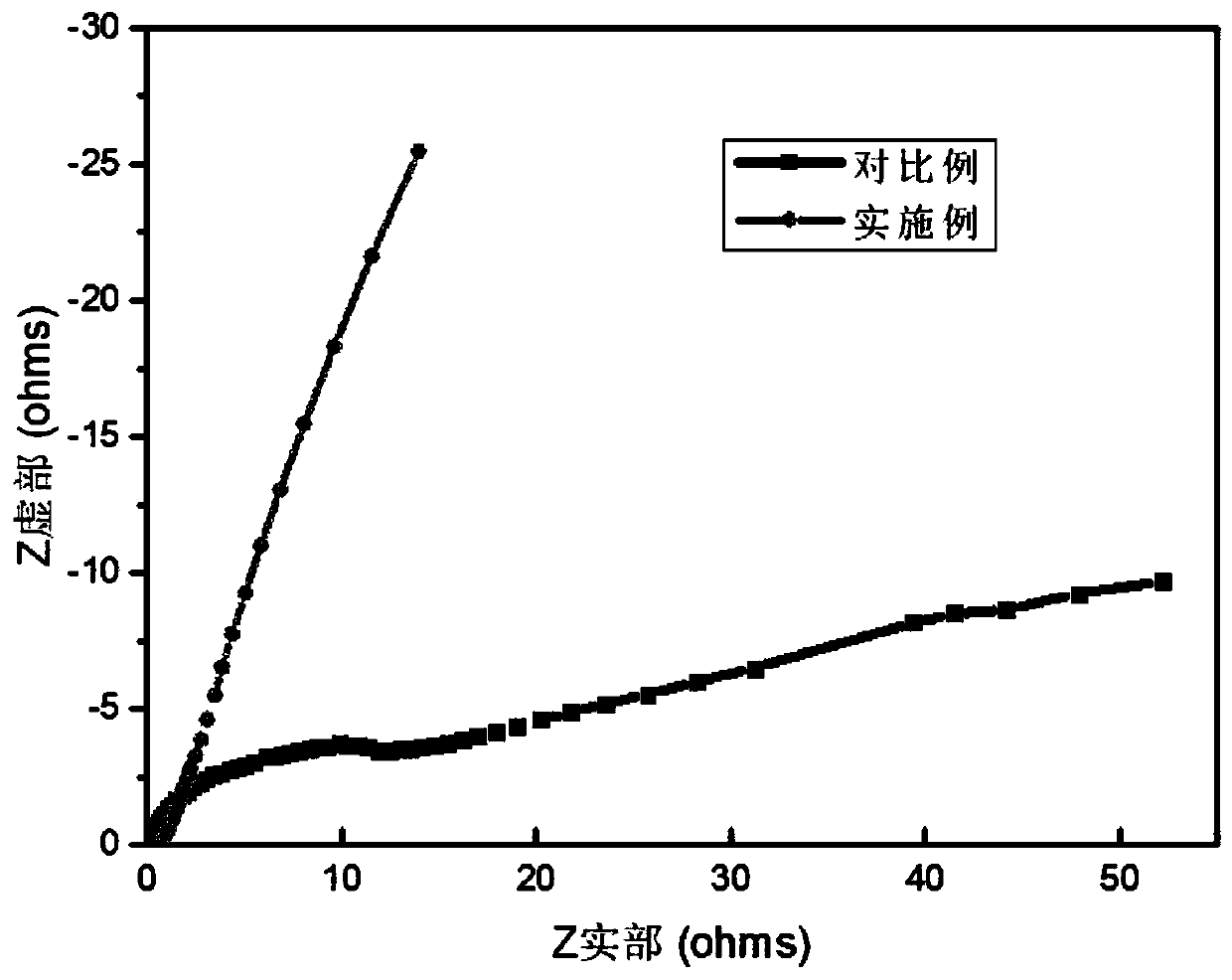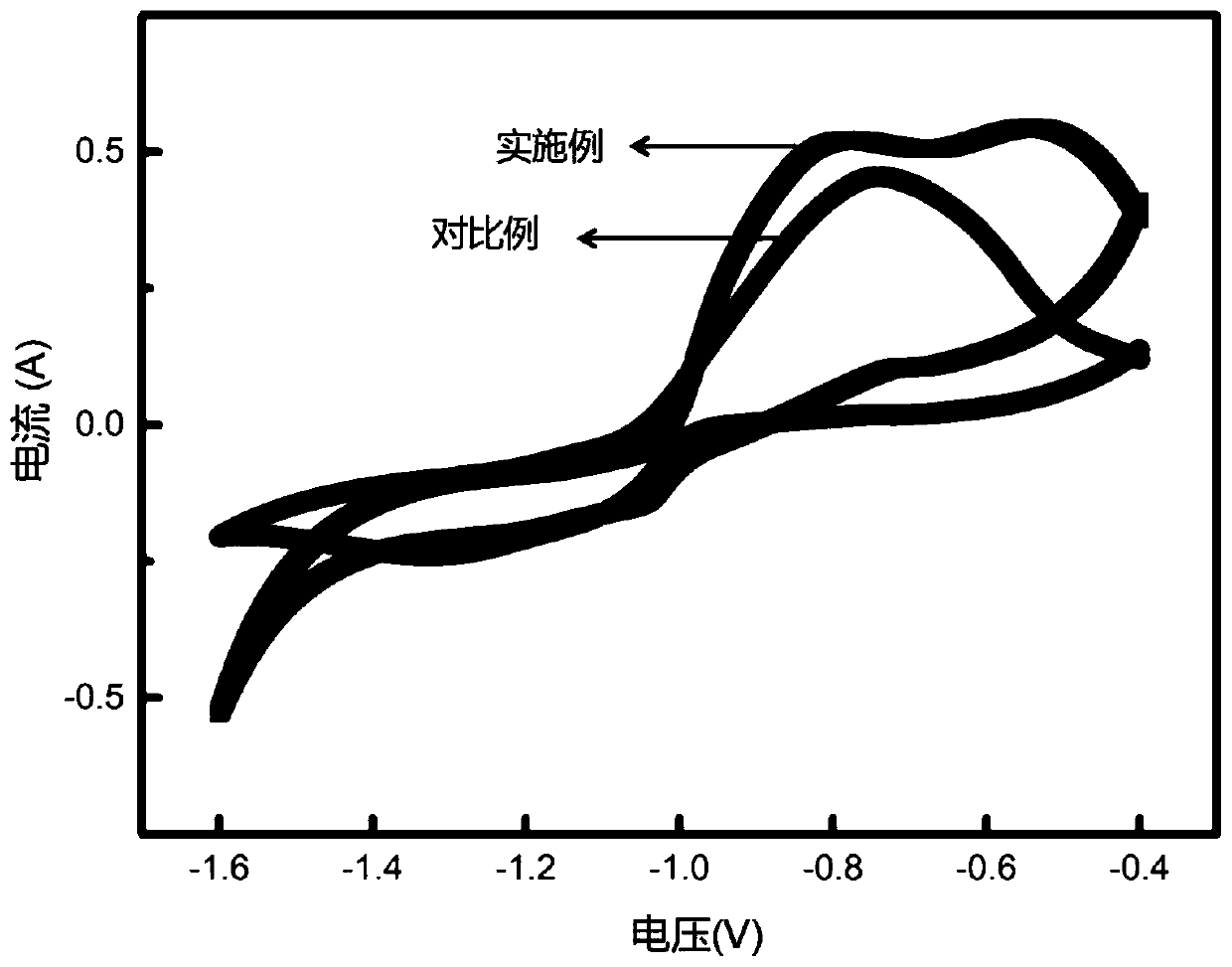External-applying lead carbon battery negative electrode preparation method
A lead-carbon battery and negative electrode technology, which is applied in lead-acid battery electrodes, battery electrodes, lead-acid batteries, etc., can solve the problems of not comprehensively solving the connectivity problem, ignoring the interaction between carbon and electrolyte, and improving the effective utilization. efficiency, increased strength, and low internal resistance
- Summary
- Abstract
- Description
- Claims
- Application Information
AI Technical Summary
Problems solved by technology
Method used
Image
Examples
Embodiment 1
[0037] The specific surface area of 70g is 2000m 2 Immerse the mixed material of activated carbon, 10g graphite, and 15g polyacrylonitrile in absolute ethanol, heat to 85°C, heat and stir at a constant temperature for 1h, and cool naturally to a viscosity that is convenient for coating to obtain a carbon paste;
[0038] Add 3g of ethylene oxide solid into 47g of water, heat to 60°C and stir at constant temperature, and obtain a transparent and uniform gel electrolyte after 8 hours;
[0039] 100g of lead powder, 0.5g of humic acid, 0.83g of 40mm polyester staple fiber, 0.8g of barium sulfate, 0.2g of sodium lignosulfonate, and 0.2g of acetylene black are evenly mixed to make an active substance. The active substance of 10.5g is slowly added successively to the water of 10.5g and the 4.7mol / L sulfuric acid of 8.3g (drop rate is 2mL / s) and stirs to make lead plaster;
[0040] Firstly, the prepared lead paste is coated on a 4*7cm lead alloy grid, dried and solidified to prepare...
Embodiment 2
[0047] 85g specific surface area 100m 2 Immerse the mixed material of graphite / g of graphite, 10g of acetylene black, and 5g of polytetrafluoroethylene in absolute ethanol, heat to 85°C, heat and stir at a constant temperature for 1h, and cool naturally to a viscosity that is convenient for coating to obtain a carbon paste; Add 5g of polyaniline solid into 50g of water, heat to 90°C and stir at constant temperature, and obtain a transparent and uniform gel electrolyte after 2 hours;
[0048]100g of lead powder, 0.5g of humic acid, 0.83g of 40mm polyester staple fiber, 0.8g of barium sulfate, 0.2g of sodium lignosulfonate, and 0.2g of acetylene black are evenly mixed to make an active substance. The active substance of 10.5g is slowly added successively to the water of 10.5g and the 4.7mol / L sulfuric acid of 8.3g (drop rate is 2mL / s) and stirs to make lead plaster;
[0049] Firstly, the prepared lead paste is coated on a 4*7cm lead alloy grid, dried and solidified to prepare a...
Embodiment 3
[0056] 80g specific surface area 100m 2 Immerse the mixed material of 1 / g activated carbon, 10g acetylene black, and 10g polytetrafluoroethylene in absolute ethanol, heat to 75°C, heat and stir at a constant temperature for 1h, and cool naturally after reaching a viscosity that is convenient for coating to obtain a carbon paste; Add 4g of polyvinyl alcohol solid into 50g of water, heat to 90°C and stir at constant temperature, and obtain a transparent and uniform gel electrolyte after 2 hours;
[0057] 100g of lead powder, 0.5g of humic acid, 0.83g of 40mm polyester staple fiber, 0.8g of barium sulfate, 0.2g of sodium lignosulfonate, and 0.2g of acetylene black are evenly mixed to make an active substance. The active substance of 10.5g is slowly added successively to the water of 10.5g and the 4.7mol / L sulfuric acid of 8.3g (drop rate is 2mL / s) and stirs to make lead plaster;
[0058] Firstly, the prepared lead paste is coated on a 4*7cm lead alloy grid, dried and solidified ...
PUM
| Property | Measurement | Unit |
|---|---|---|
| Specific surface area | aaaaa | aaaaa |
| Specific surface area | aaaaa | aaaaa |
| Length | aaaaa | aaaaa |
Abstract
Description
Claims
Application Information
 Login to View More
Login to View More - R&D
- Intellectual Property
- Life Sciences
- Materials
- Tech Scout
- Unparalleled Data Quality
- Higher Quality Content
- 60% Fewer Hallucinations
Browse by: Latest US Patents, China's latest patents, Technical Efficacy Thesaurus, Application Domain, Technology Topic, Popular Technical Reports.
© 2025 PatSnap. All rights reserved.Legal|Privacy policy|Modern Slavery Act Transparency Statement|Sitemap|About US| Contact US: help@patsnap.com


